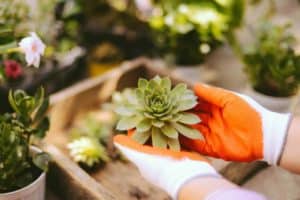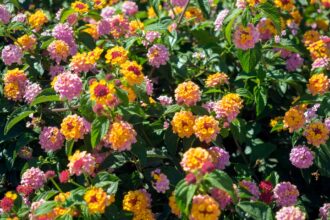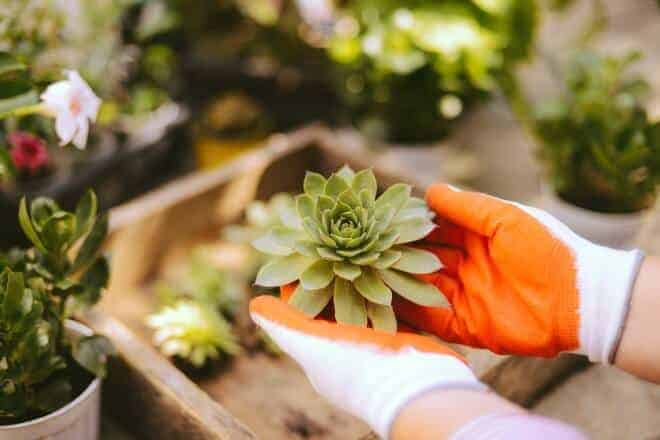
via: Depositphotos / ch_ch
Whether you're living in the Southwest or just want to capture some of that feel, succulents can be an amazing addition to your home garden, but only if you know how to plant succulents to ensure they'll thrive.
While succulents are used to surviving extremes, that doesn't mean they can survive anything—particularly when you plant them wrong. Knowing how to care for succulents through careful planting is crucial to seeing them blossom in your inside or outside garden.
Luckily, caring for succulents isn't all that hard. With a little know how, you can learn how to settle these plants into your home or garden so they can give off that beautiful desert energy that can brighten up your whole year and bring wonderful contrast to your other plants.
Contents
What are succulents?
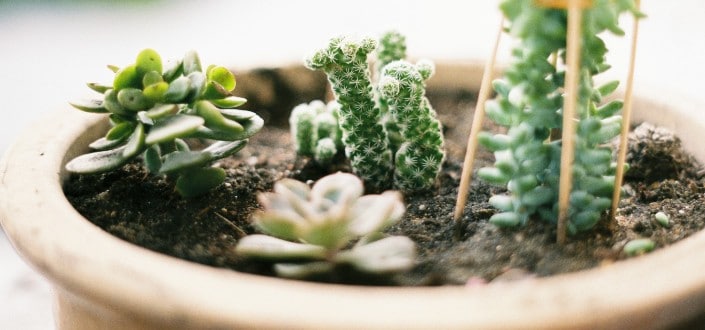
via: Unsplash / Rebecca Lee
Succulents are plants that typically grow in arid, desert climates. They survive by storing a great deal of water within their thick stems and leaves, which means they tend to be juicy when cut open. ("Juice" is the translation of the Latin word "sucus," which is where the plants get their name.)
At this point, your mind has probably put "plant" and "desert" together to imagine a cactus. In which case, you're right, but you're also limiting how broad this category is. (Also, technically, not all cacti are succulent...) Succulents also include common houseplants like aloe, houseleeks, chocolate soldiers, and much more.
These drought resistant beauties tend to be so popular because they're attractive and fairly easy to maintain. But that doesn't mean you can slide on learning how to plant succulents. Because it's still very possible to get this process wrong.
Why is knowing how to plant succulents so important?
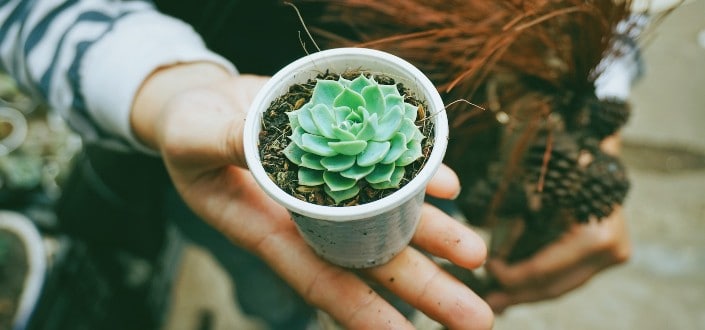
via: Unsplash / Tony Lam Hoang
Just because succulents are built to resist tough climates doesn't mean you can just assume these rugged plants will survive if you plant them wrong. In fact, learning how to plant succulents properly is one of the most essential points to take care of these desert greens.
As with every kind of plant, getting the details right here can make all the difference between a beautiful, flourishing addition to your garden and a shrunken, dying blemish that lasts less than a month in its new home.
Succulents do indeed require less attention from your watering can (although even there, you must be careful, as we'll see), but that doesn't mean they don't need just as much love and consideration.
How to plant succulents
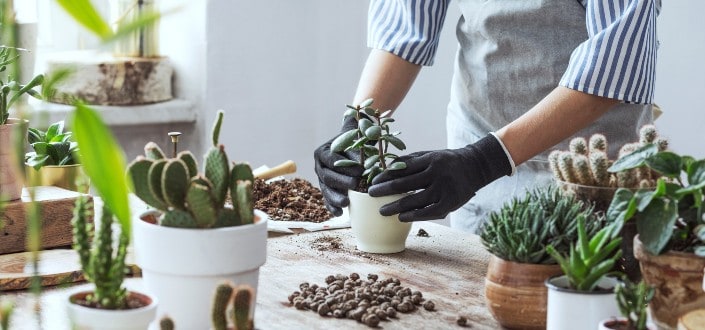
via: Depositphotos / Followtheflow
So if you're interesting in adding succulents to your indoor or outdoor garden, you have to be interested in caring for succulents as well. To learn how to plant succulents and tend to them, just follow these three steps.
1. take care of the soil
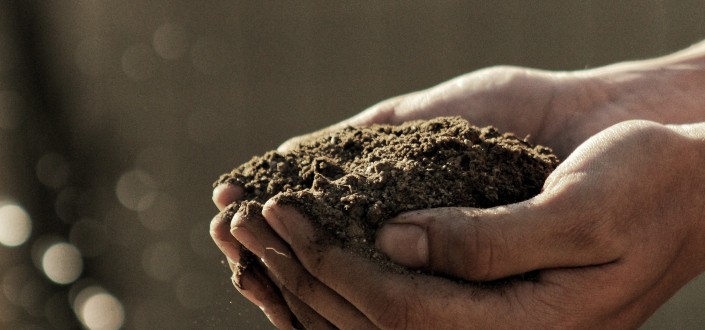
via: Unsplash / Gabriel Jimenez
Whether you're planting them in a pot or outdoors, the soil that comes with your succulents is often wrong for those plants. Specifically, it's often too dense for those plants to thrive.
To create a space where your succulents can thrive, focus on getting soil that would make your succulents feel at home. This is often sandy potty soil. You can either develop a good mix yourself, or if you're a novice, pick up a prepackaged variety of soil that is already mixed specifically for succulents.
2. preserve the roots
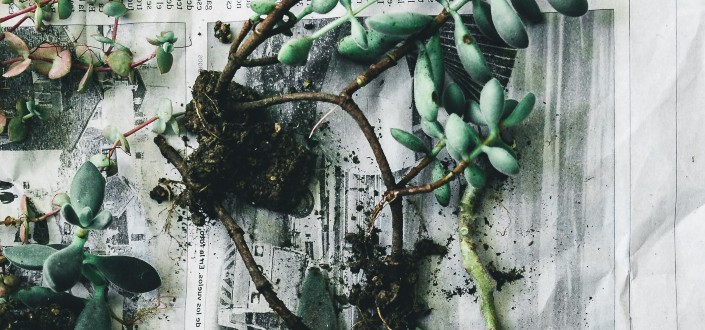
via: Unsplash / Florencia Potter
When you remove your succulent from the soil it came in, be extra careful with the roots. You want to remove as much of the original soil as possible from the roots without damaging them. This will allow them to settle most easily into their new soil. But again, be extra attentive to the roots because if those are damaged, the plant is in far worse shape.
3. prepare your pot for succulents

via: Unsplash / Cassidy Phillips
If you're planting your succulents indoors in a pot, you need to choose and prep the right pot. Your pot should have a drainage hole and a saucer below so that excess water doesn't remain in the soil and drown the plant. At the same time, you don't want the water to simply run straight through the pot and starve the succulent either.
To get the balance right, cover that drainage hole with some mesh tape that will allow extra water to escape but still hold in enough water that your succulent can drink in enough to stay healthy.
Additionally, fill your new succulent soil almost up to the top of the pot so that the plant will be cozy in its new home.
4. plant in a place with enough right light
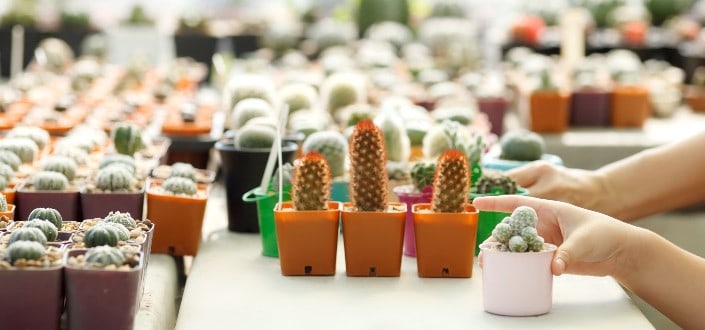
via: Depositphotos / phasinphoto
It's an obvious point, but still worth pointing out: succulents need light. That's what they're getting when they grow naturally in the desert, and that's what they need when they sit on your desk in some frozen, northern city.
Whether planted outdoors or indoors, make sure your succulent plant is getting at least six hours of direct sunlight a day. If there isn't enough sunlight to go around, a sun lamp may be useful.
5. know the types of succulents
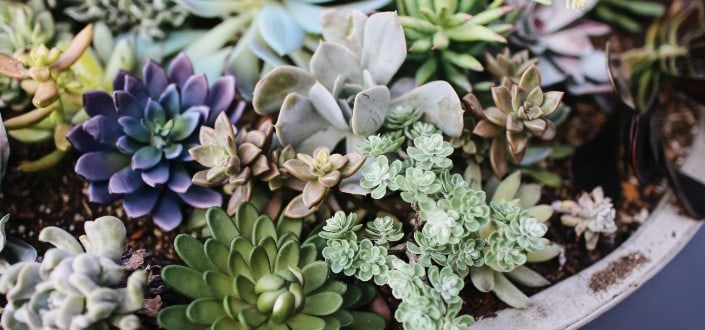
via: Unsplash / Fallon Michael
As mentioned above, there are in fact many types of succulents. We aren't just talking cactus here. We're talking about a wide variety of plants. Knowing what types you want and have can make a lot of difference in how you care for them.
To really dig into what succulent plants are right for you, the first thing you have to do is determine if you are looking at indoor succulents or outdoor succulents. This is a bit of a false distinction. The truth is all outdoor succulents can be indoor succulents, but only some indoor succulents can survive if planted in various outdoor climates.
The more you know about the planting needs of your individual succulent plant, the more you can accommodate it in your planting plans.
6. know how to water succulents
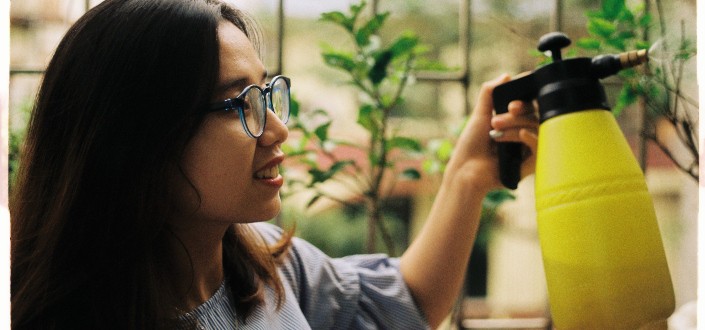
via: Unsplash / Trung Thanh
Once your succulent plant has been planted successfully, you can offer it its first drink. This step is often overlooked by new succulent buyers. These individuals newly cultivating their green thumb assume that desert plants like succulents can just be watered here and there, and they'll get by just fine. In other words, they assume succulents are an excuse to be lazy in tending to their plants.
In fact, there is a process for how to water succulents. Essentially, you want to give succulents water less often than other plants, but when you give it, be sure to be fairly generous. Instead of providing a daily misting or an occasional sip, focus on providing the plants with occasional long drinks.
These drinks should not leave extra water standing on top of the soil or in the saucer underneath. Again, you don't want to drown the thing. But by providing significant water at rarer intervals, you'll replicate the arid conditions of the desert in which water comes in bursts instead of trickles.
This should probably be every few days, but be sure you attend to the specific needs of your plant.
More Awesome Guides To Plants
If you're looking to diversify your indoor or outdoor garden beyond succulents, we've got you covered with guides to all these plants:
- Bring island life to your home with this guide on tropical house plants so you can imagine relaxing in the sand even in the middle of winter.
- Bring the green inside by learning about the types of house plants that would look best in your home.
- Learn how to grow an avocado tree so you can save money on your Millennial avocado toast breakfast and brighten up your home all at once.
In Conclusion
Once you know how to plant succulents and how to take care of succulents, you'll find they are as easy to keep happy as you could dream. Succulents can be among the most beautiful, charming, and easy going of your plants indoors or outdoors, but they do require you to plant them in the right conditions to thrive.
So long as you use the advice here and learn how to care for succulents when you bring them home, they'll reward you by flourishing. In the end, just as with any plant, caring for succulents allows them to provide all the reward you're looking for. So study up and get planting.


